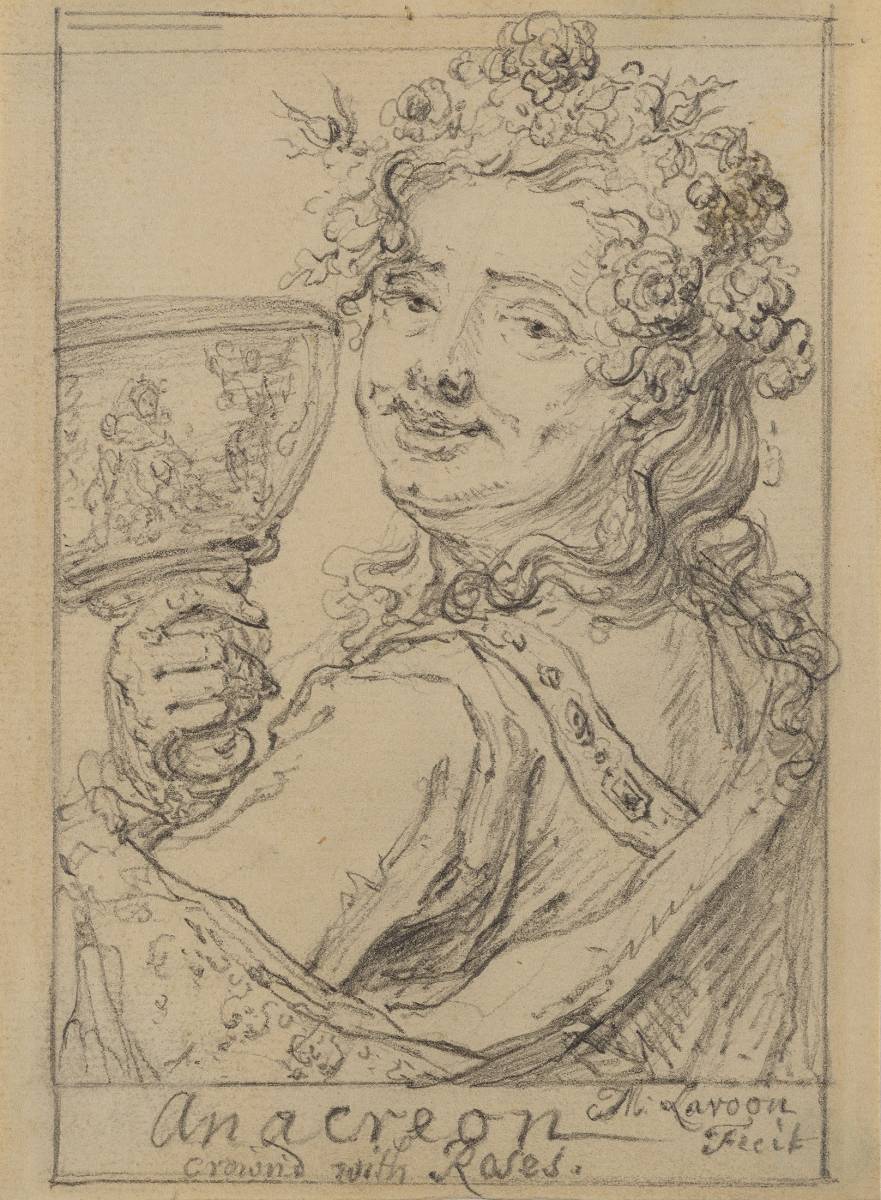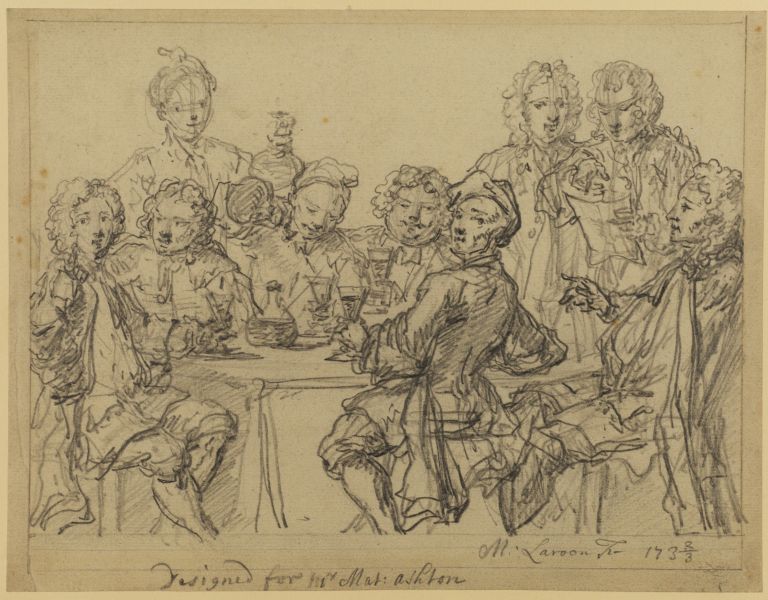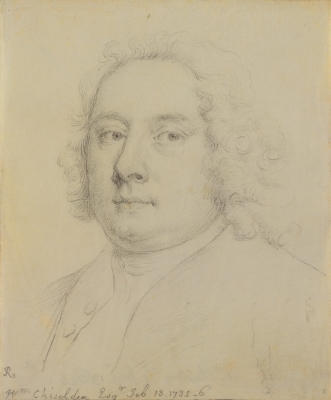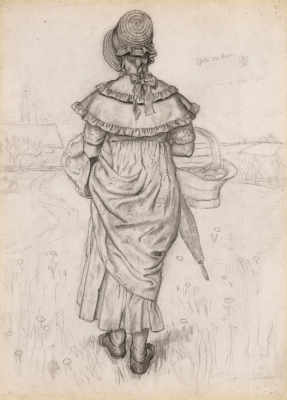This drawing was identified by Ilaria Bignamini as being a humorous portrait of the artist Matthew Ashton made in his capacity as a member of the Rose and Crown Club. The Rose and Crown was the earliest recorded dining society formed by professional artists in Britain, particularly associated with the Great Queen Street Academy and the first St Martin’s Lane Academy. The meetings of the Rose and Crown played a crucial role in the transformation of practitioners of the fine and the applied arts into a modern profession. Bignamini in her pioneering study of London academies identified eighty-five members including George Vertue, who acted as secretary and all the leading painters and sculptors working in early Georgian Britain from William Hogarth and John Mihcael Rysbrack to European artists who only visited London including Jean-Baptiste Van Loo and Jean Antonine Watteau.[1]
According to Vertue the Rose and Crown Club originated in or about 1704. Meetings took place on Saturday nights at public taverns. Apart from their weekly meetings, the members of the club also celebrated ‘Kalendae. Or monthly coputations’, that is to say general meetings or feasts held on the first Saturday of each month. No specific tavern is mentioned by Vertue, except for the last meeting held ‘at the Half moon Tavern’ in May 1745. Vertue described the meeting place used in c.1724 as: ‘at the Harpsichord Lubec a Playing a piece of musick of Mr Trusty’s composing & other proper ornaments about the room as the Prints the Pinecothoca, etc. Punch bowl on the table bottles of wine pipe glasses Tankard etc.’ Vertue accompanied this description with a raucous sketch, which brings to mind Hogarth’s Midnight Modern Conversation. A tradition of club portraiture existed. The painter John Smibert produced a painting entitled Virtuosi of London in about 1723, now lost, it was sketched by Vertue and described as ‘one large piece being a Club of Virtuosi. Or a groupe of the Rosa Coronians.’ Marcellus Laroon produced two drawings a decade later which similarly celebrate a convivial meeting. One, now in the collection of the Courtauld Institute, London, is inscribed ‘Designed for Mr Mat: Ashton’ and shows the portrait painter Matthew Ashton at the centre of company. Ashton is recognisable thanks to a further drawing by Laroon at the Courtauld inscribed ‘Mat ashton the painter at Chester - Caricatura.’ Bignamini identifies the present drawing as a further depiction of Ashton and suggests that it was made as a ‘Rose and Crown portrait.’ The portrait of Ashton as the lyric poet Anacreon, notable for his drinking songs and erotic poems, is specifically labelled as being ‘crown’d with Roses’ in an allusion to the club’s name. It was almost certainly devised as a good-hearted caricature of one of the most committed members of the dining club.

Marcellus Laroon
1679–1772
Mat Ashton, the painter at Chester
graphite (recto and verso) on laid paper
8 ¾ x 12 ⅞ inches; 223 x 327 cm
1725
The Courtauld, London (Samuel Courtauld Trust)
Photo © The Courtauld
Born in London, the son of Marcellus Laroon the elder, a painter who had been born at The Hague, who was, in turn, the son of Marcel Lauron, a French painter of portraits and landscapes. Laroon senior worked for the book trade in London, producing a famous series of engravings of The Cryes of the City of London, published by Pierce Tempest. His son, at aged only eighteen, attended the peace conference at Rijswijk in Holland as a page before visiting Venice with Charles Montagu, fourth Earl of Manchester. Laroon practiced as a painter, but also as a singer for Colley Cibber at the Drury Lane Theatre. From singer to soldier, Laroon joined the 1st regiment of foot guards campaigning in Flanders, Spain and eventually Scotland.
Whilst Laroon was at the heart of artistic life in London, subscribing to Kneller’s Great Queen Street Academy and being listed as a member of the Rose and Crown Club, Laroon’s practice seems to have been largely ancillary, he certainly did not rely on painting to provide an income. This gave him tremendous freedom in the subjects he chose to paint. Laroon interpreted eighteenth-century English life with sympathetic humour and refinement. His painted scenes, particularly his conversation pieces, tend to retain a quality of the theatre, staging the figures as though in a contemporary production. The present rustic scene shows Laroon’s distinctive technique, thinly painted in very liquid oil, the painting has the sprightly quality of a pen and ink drawing. Laroon was very alive to trends in French painting and almost certainly saw engravings of the works of Watteau.



